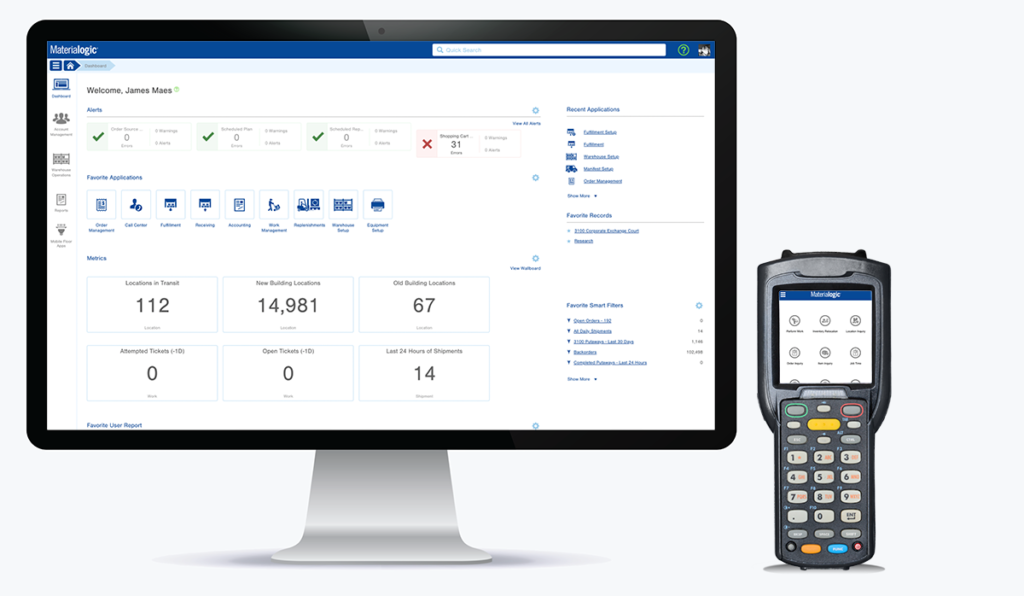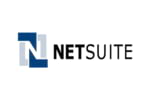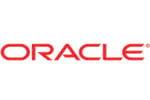ShipHero is a cloud-based solution that offers warehouse, inventory management, and fulfillment services to ecommerce brands. ShipHero started in 2013 with a cloud-based warehouse management system (WMS) application. It expanded to add order fulfillment services in 2019, just in time for the increase in online shopping due to the global pandemic.
ShipHero offers one-click integration with all major ecommerce shopping platforms and has seven physical warehouse locations throughout the United States. It boasts a flat rate, no zone approach to order fulfillment, making it appealing to ecommerce brands looking for a simplified approach to monthly shipping costs.
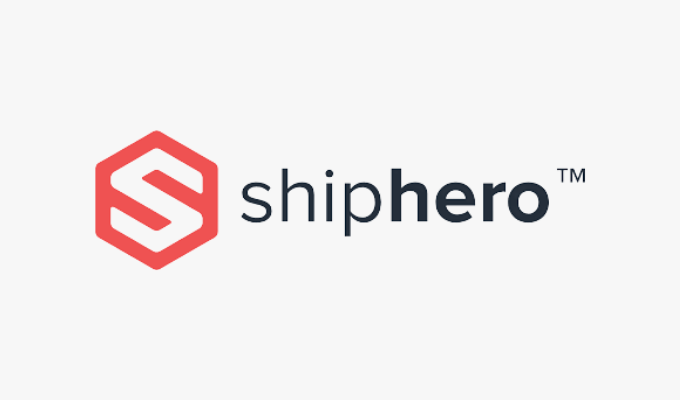
ShipHero Compared
ShipHero did not make our top list of ecommerce fulfillment services. The best ecommerce fulfillment service is ShipBob because it is easy to use, offers two-day shipping in the U.S., and also offers retailer dropshipping and B2B fulfillment. Get started with ShipBob’s self-service Growth Plan for startups today.
- ShipBob – Best ecommerce fulfillment platform
- Red Stag Fulfillment – Best for high-value and large products
- ShipMonk – Best for subscription boxes
- Dot Foods – Best for food and beverage ecommerce
- Easyship – Best for international fulfillment
Whatever your needs, one of these ecommerce fulfillment services will help you streamline delivery and ensure customer satisfaction.
About ShipHero
ShipHero is somewhat unique among ecommerce fulfillment services, in that it started life as a warehouse management app and then added fulfillment later on. Now that it offers both services, ShipHero is a one-stop solution for ecommerce brands’ storage, management, and delivery needs.
ShipHero’s suite of services and solutions includes fulfillment services, a warehouse management system, integrations with top platforms for ecommerce like Shopify and WooCommerce, an API for developers, and a nationwide network of seven warehouses across the U.S. They also offer a flat-rate/no zone pricing approach for fulfillment, and no cost for setup, software, onboarding, and product receipt.
ShipHero Health and Stability
ShipHero was founded in 2013 as an online platform for warehouse management. In 2019, they expanded to also offer order fulfillment services. It is a privately held startup that competes with a significant number of other startups offering similar services – many with similar names.
ShipHero has received two rounds of private equity funding. In November 2021 it received funding of $10.4 million from investor Joe De Pinho. Seven months later, Riverwood Capital invested $50 million. ShipHero planned to seek a third round of funding in June 2022 but put plans on hold due to the weakening economy and the post-pandemic decline in online shopping.
ShipHero services more than 5,000 ecommerce brands and 3PLs around the world. As would be expected, ShipHero flourished during the pandemic years when online shopping was at its peak. However, it struggled to meet demand during the peak fall and winter shipping season of 2022, resulting in several negative reviews by customers starting in December 2022. To its credit, ShipHero acknowledged those issues and committed to improving processes in Q1 of 2023.
Like all the startup fulfillment services in this space, ShipHero is vulnerable to external economic forces and fluctuating customer demand. There are also many similar competitors in this space. Time will tell whether ShipHero rises above its competition or is acquired by another brand.
ShipHero Pricing
For its ecommerce fulfillment services, ShipHero does not provide any price information on its website. Instead, you must request a quote and meet with its fulfillment team. Then you’ll receive a customized quote based on your unique requirements.
ShipHero is more transparent when it comes to its warehouse management system. It offers three tiers of pricing, including Standard WMS for Brands, WMS for 3PLs, and Enterprise WMS for Brands.
ShipHero Pricing Structure
ShipHero’s ecommerce fulfillment services are not transparent. The only information provided on the ShipHero website is that fulfillment pricing is flat rate and doesn’t rely on zones to calculate costs for domestic shipping in the U.S. The flat rate includes picking the order, packing, the box, and postage.
ShipHero’s warehouse management system is more clear. Pricing starts at $1,995 for the Standard plan and $2,145 for the 3PLs plan. Enterprise customers must get a quote. All three tiers include five users, with additional users added at $150 each per month. All plans include unlimited SKUs, multiple warehouses, API access, and unlimited orders.
ShipHero Pricing Comparison
ShipHero’s pricing for ecommerce fulfillment services is not disclosed. Contrast this with some of its closest competitors that put baseline prices on their websites: ShipBob starts at between $5.66 to $6.03, ShipMonk begins at $3 per single item order, and Easyship offers a starter plan that includes up to 50 packages per month for free, although you must pay for postage through your own shipping account.
Despite ShipHero’s refusal to disclose fulfillment pricing, it does highlight its flat rate/no zone approach as a unique selling point. Both ShipBob and Red Stag Fulfillment charge by package dimensional weight and shipping zone.
ShipHero takes a different approach with its Warehouse Management Services fees, which it does disclose. Monthly plans start at $1,495 per month (Standard) and $2,145 (3PL). However, its direct competitors in this space, including Red Stag Fulfillment and ShipBob, go in the other direction and keep their warehouse management service pricing hidden. You’ll need to get a quote in order to compare those services to ShipHero.
ShipHero Trials and Guarantees
ShipHero does not offer any free trials or introductory pricing on its website. They also require full payment upfront to start using their services.
However, they do offer a 30-day money-back guarantee. While this is not promoted on their website, they mention it in responses to customer reviews on sites like Capterra, TrustPilot, and G2.
ShipHero Ecommerce Fulfillment Services Review
ShipHero is an app-based ecommerce fulfillment platform that also offers a warehouse management system. Its streamlined approach to pricing – offering a flat rate and no zone differentials – is unique among its chief competitors.
While ShipHero didn’t make our top list of ecommerce fulfillment services, it may be a good option for online shops that prioritize consistent monthly fulfillment costs.
What Makes ShipHero Ecommerce Fulfillment Services Great
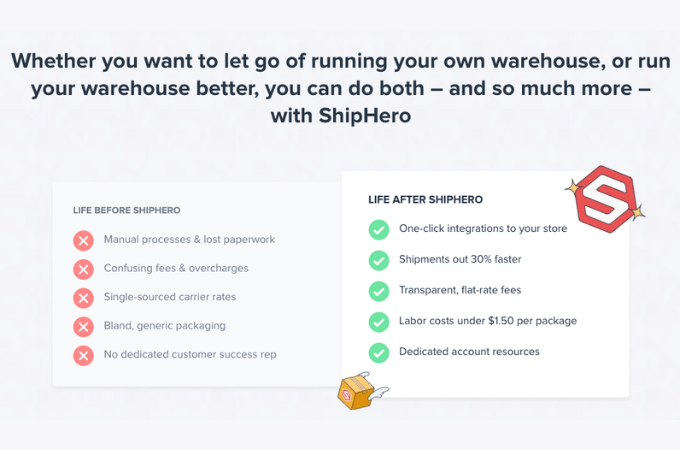
- All-in-one solution: One of the selling points of ShipHero is the ability to coordinate fulfillment and warehouse management in one tool. For ecommerce sellers that need both, this is a streamlined approach that saves time and reduces the need to rely on multiple apps to solve different needs.
- Great customer service: ShipHero customers consistently praise the helpful and fast customer support they receive. From providing timely and thorough responses to going above and beyond to proactively resolve issues before they actually become issues, the ShipHero customer service team consistently receives kudos and shout-outs.
- Easy to use: Another win for ShipHero is its intuitive user interface and app navigation. A consistent theme heard from users is how easy it is to get new employees up and running on ShipHero, often in less than 15 minutes. Many users have cited this as a determining factor in allowing them to bring fulfillment back in-house instead of relying on 3PL providers.
- Streamlined onboarding: ShipHero makes onboarding easy with one-on-one setup and training. This onboarding assistance is included at no additional charge in their Standard warehouse management system package.
- In-depth reporting: Users consistently rate ShipHero’s reporting as a big plus of the product. In-depth reports are easy to pull and very detailed.
Where ShipHero Ecommerce Fulfillment Services Fall Short
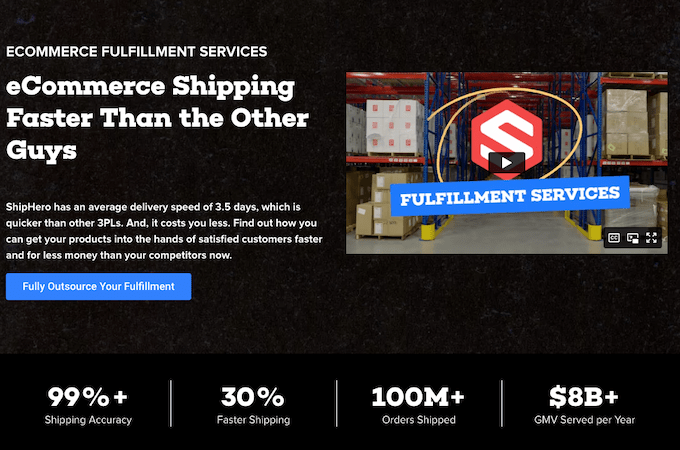
- Inconsistent performance record: Numerous customer reviews note extreme delays with order fulfillment during the peak fall-winter season of 2022. ShipHero acknowledged struggling in this regard and promised to make improvements in Q1 of 2023. However, this inconsistent performance seems to be cyclical, with periods of optimal service bracketed with months of struggle, as noted in customer reviews over the years. ShipHero must focus on mastering consistent exemplary customer service to remain competitive.
- No free trial or special offers to get started: Unlike its competitors ShipMonk and ShipBob, who both let new customers self-onboard for free, ShipHero doesn’t offer any options like that to new customers. Payment is required up front to begin service. ShipHero does, however, claim to offer a 30-day money-back guarantee, although this isn’t advertised on their website. To become more competitive, ShipHero should consider more transparency and a more customer-centric approach to starting with their services.
- High price/warehouse management packages could be more robust: Although their pricing for order fulfillment is not readily available on their website, a recurring theme in customer reviews is that fees are a bit high. Another complaint was that not enough user seats are included in the baseline pricing of ShipHero’s warehouse management system packages.
- Hard to reach: While ShipHero might garner many positive reviews for customer service, getting that service started can be a point of contention. Current customer support involves submitting a ticket and waiting for a response. There is no customer support telephone number available. To remain competitive, ShipHero should consider multiple customer communication channels.
Ecommerce Fulfillment Services Compared
While ShipHero offers several compelling features that make it a good solution for some ecommerce brands, other fulfillment services are a better alternative.
If you’re an ecommerce brand that wants to streamline order fulfillment and better manage your warehouse, be sure to read our Best Ecommerce Fulfillment Services review, then take a deeper look at ShipBob, our top recommendation.
- ShipBob – Best ecommerce fulfillment platform
- Red Stag Fulfillment – Best for high-value and large products
- ShipMonk – Best for subscription boxes
- Dot Foods – Best for food and beverage ecommerce
- Easyship – Best for international fulfillment
Final Verdict
ShipHero has been involved in the ecommerce brand space for nearly ten years with its warehouse management system. It ramped up its order fulfillment services in 2019 and offers an enticing flat rate/no zone approach to shipping products.
However, we recommend considering other options like ShipBob for most ecommerce brands. You can find out more about who we recommend and why in our Best Ecommerce Fulfillment Services review.




